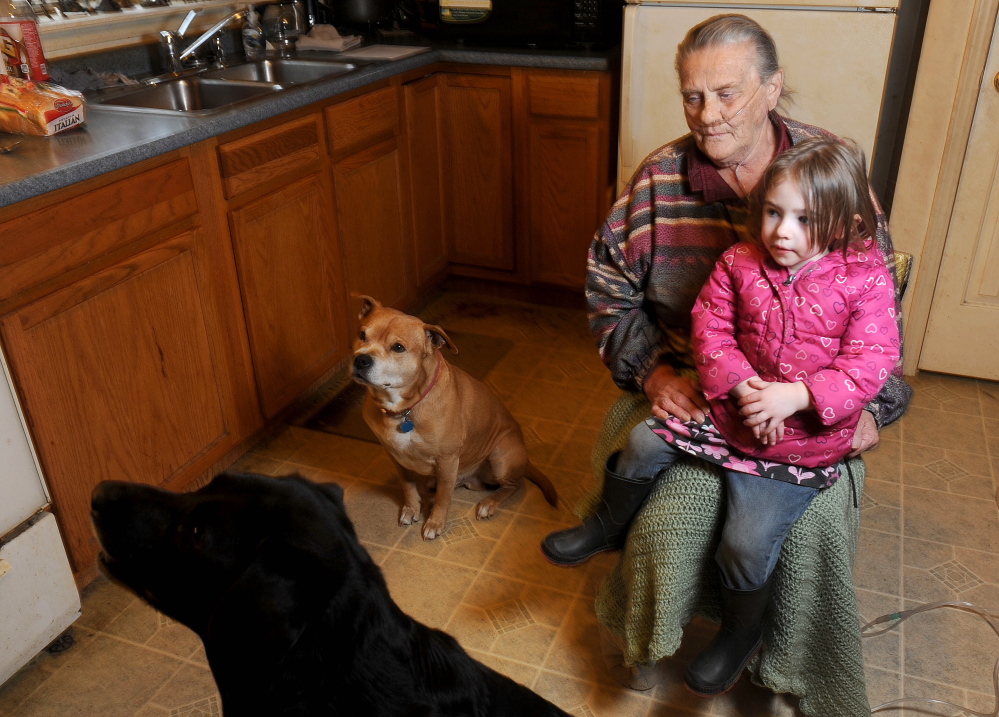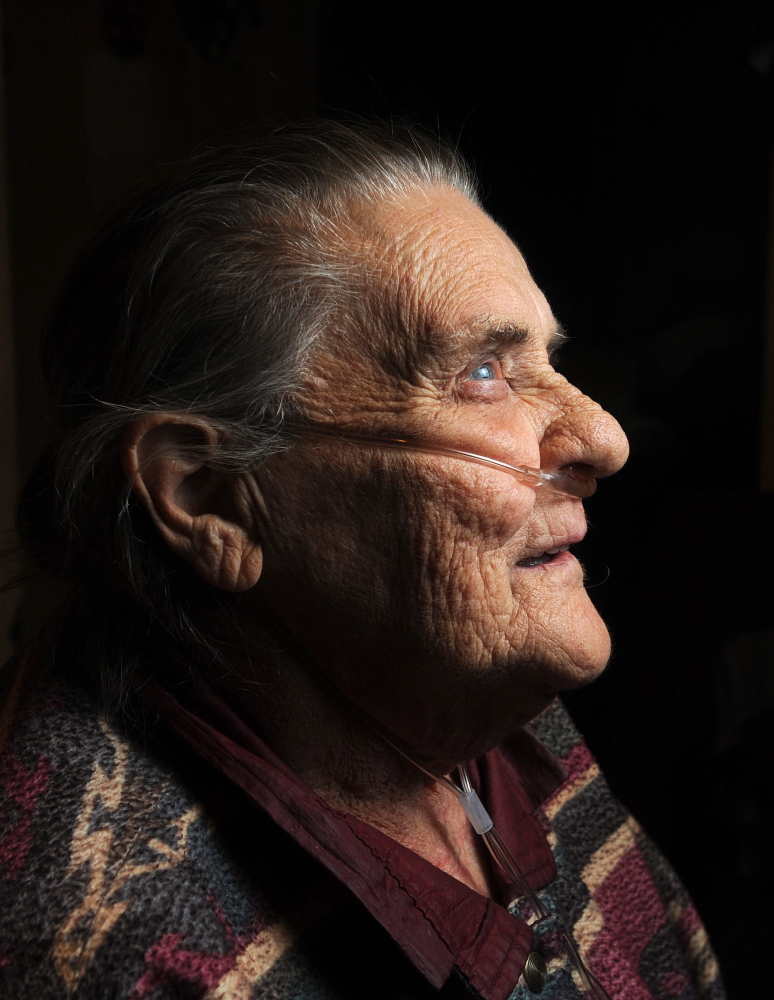Buddy the dog is Wealthy Shaw’s best friend.
The nine-year-old Labrador retriever that Shaw took in as a stray eight years ago sleeps beside her bed and shadows her every move during the day.
He’s her protector, she said.
So when Shaw, 75, became ill and couldn’t look after the dog properly, Hospice Volunteers of Somerset County stepped in with a new program called Pet Peace of Mind, in which volunteers take care of Buddy when Shaw is away from home for any length of time.
As a Hospice patient, Shaw said she doesn’t have to worry about Buddy any more.
Shaw lives with her son, Dale Call, and his dog Rusty, a pit bull terrier mix, on a rural road about a mile off U.S. Route 2 in Palmyra. With hospice volunteers, both dogs are in good hands if anything goes wrong, she said.
“They see me, they ask me if my dogs are doing good,” Shaw said. “It’s a good thing. I don’t have to worry now. I’m so glad. It makes me feel good now.”
Nina Pleasants, interim executive director of Hospice Volunteers of Somerset County, said her group administers non-medical assistance to patients and their families in partnership with medical services at MaineGeneral Hospice and Hospice of Eastern Maine.
“We go in, we run errands, we help care givers and get people access to resources; we’ll cook a meal — whatever they need,” Pleasants said. “We work with somebody who is ill or restricted in movement or needs help. It’s end of life care, mostly. Pet Peace of Mind allows patients to complete their end of life journey without worrying about their pet’s current needs.”
Pet Peace of Mind was started at Hospice Volunteers of Somerset County as the first such program in Maine in October. The program began with a $5,000 grant from the Banfield Charitable Trust, a Portland, Ore. based group working to keep pets and people together, making sure pet owners will never have to surrender their pets.
The program model, developed by the trust, says that people bond with their pets in much the same way they bond with people. Program volunteers buy pet food and medicine if necessary, assist in veterinary visits, take the pets for walks, provide grooming and give them the love and attention they have come to expect from their owners.
As families deal with grief and loss during hospice care, the pets may be overlooked, forgotten or treated as an afterthought by family members unfamiliar with the patient’s bond with a pet, according to the Banfield website.
“Pets are treated and loved like family members and they comfort their owners much like a close friend or relative,” according to the Banfield mission statement. “It is no wonder then that during one of the most important and challenging life stages — the end-of-life journey — pets can play a critical role.”
Pleasants agrees, noting that the Somerset Hospice currently has two Pet Peace of Mind clients: Shaw in Palmyra and another woman in Fairfield.
She said volunteers impress upon the two women that the care they provide is not a reflection of their neglects of their pets — it is assistance for them and their best friends — their pets.
Kandyce Powell, executive director of Maine Hospice Council & Center for End-of-Life Care in Augusta, said the relationship between medical patients and their pets helps emotionally and physically.
She said studies show that the purring of a cat or the wag of a dog’s tail actually can lower blood pressure in a patient.
“The one thing that animals give us is unconditional love and we often don’t give that to each other,” Powell said. “Pets fill a gap in our lives and they become to some people like their children, like their best friend. Animals provide so much comfort to us.”
Powell said pets know when their human friends aren’t feeling well and will curl up beside the person to help make them feel better. Programs such as Pet Peace of Mind allow the patient to know their pet is being cared for, which is also a comfort, she said.
“It’s immeasurably comforting to people,” Powell said.
Pleasants said when hospice care begins, the best way to communicate with patients is to sit down and talk about their pets.
Trust is established much earlier if the caregiver knows the pet by name and can establish a bond with the animal and get the patient to talk about the obstacles taking care of a pet can bring during their illness.
“It’s a way of starting a conversation — her pet kept her safe living alone; kept her company,” Pleasants said. “Sometimes, when she was getting ill, Buddy was the reason she’d get out of bed to go walking. That dog was taking care of her for years; he was her guardian — this was a program that allowed her to know he was being taken care of, too.”
Doug Harlow — 612-2367 dharlow@centralmaine.com Twitter: @Doug_Harlow
Send questions/comments to the editors.





Success. Please wait for the page to reload. If the page does not reload within 5 seconds, please refresh the page.
Enter your email and password to access comments.
Hi, to comment on stories you must . This profile is in addition to your subscription and website login.
Already have a commenting profile? .
Invalid username/password.
Please check your email to confirm and complete your registration.
Only subscribers are eligible to post comments. Please subscribe or login first for digital access. Here’s why.
Use the form below to reset your password. When you've submitted your account email, we will send an email with a reset code.